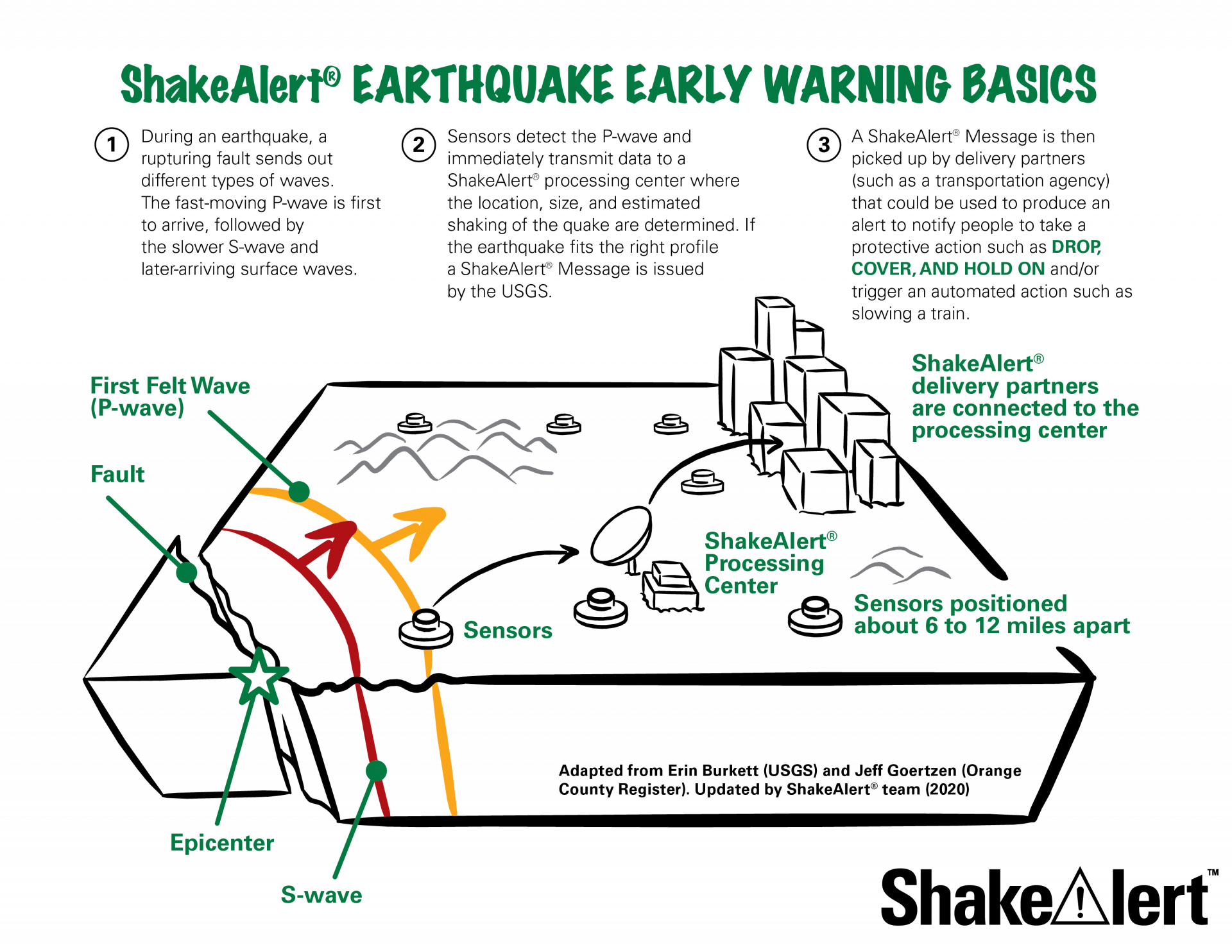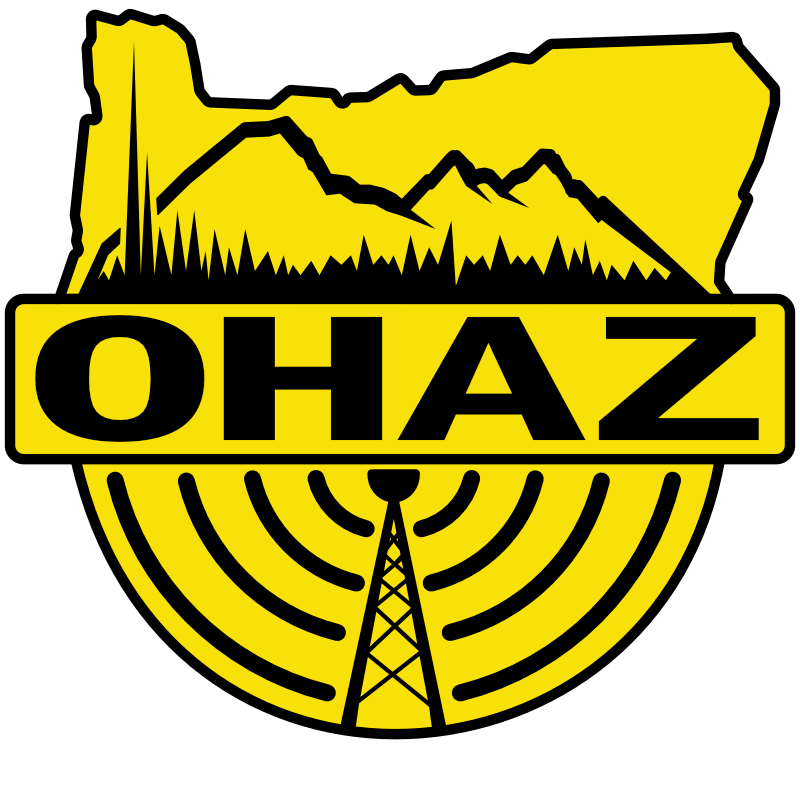New Algorithm GFAST Enhances the ShakeAlert Earthquake Early Warning System
ShakeAlert is the world’s first earthquake early warning system that incorporates geodetic data and algorithms.

Introducing the GFAST Algorithm
ShakeAlert uses real-time data from over 1500 seismic sensors and now, with the incorporation of the GFAST algorithm, utilizes data from over 760 Global Navigation Satellite System (GNSS) sensors for rapid earthquake detection. GNSS includes the well-known US-based Global Positioning System (GPS) as well as other satellite-based positioning systems used across the globe. Seismometers measure how quickly the earth is shaking in terms of velocity or acceleration. GNSS geodetic sensors measure how far the ground moves up, down, or sideways as a result of an earthquake. Small earthquakes cause small localized shifts. Larger magnitude earthquakes have greater velocity and acceleration of shaking as well as cause more extensive permanent ground displacement. During a Cascadia Subduction Zone earthquake, the ground could shift down and westward by several meters!

Developing the GFAST Algorithm
GFAST was developed by PNSN researchers Brendan Crowell and Carl Ulberg, who work at the University of Washington. Research was also contributed by Diego Melgar, who directs the Cascadia Region Earthquake Science Center at the University of Oregon, and Jessica Murray of the USGS. Crowell and Melgar began developing the theory that peak ground displacement is analogous to earthquake magnitude in the early 2010s as part of their PhD research at the Scripps Institution of Oceanography. Crowell then used funds donated to the PNSN by the Gordon and Betty Moore Foundation and the Amazon Catalyst Program to develop the methodology and code base for the early GFAST algorithm and convert it to a format that was compatible with the ShakeAlert System. Additional funds from the USGS Earthquake Hazards and NASA Disasters programs helped to further refine the GFAST architecture.
In the early 2020s, Ulberg and others in ShakeAlert’s Software Management Working Group began integrating GFAST messages into the ShakeAlert solution aggregator. This aggregator was designed to evaluate the results of the two other earthquake detection algorithms already used by ShakeAlert and provide a definitive estimate of the detected earthquake’s size and location. Those existing algorithms, EPIC (Earthquake Point‐source Integrated Code) and FinDer (Finite‐Fault Rupture Detector), solely use data from seismic stations.
Ulberg created new logic within the ShakeAlert solution aggregator and GFAST itself in order to decide when and how to use GFAST in addition to EPIC and FinDer. For example, GFAST had to understand how many geodetic stations needed to provide data and how much displacement was required before an estimated magnitude would be considered reliable. It also had to weed out background “noise” from geodetic stations that could lead to false alerts. GFAST cannot reliably detect small and moderate earthquakes and works best in conjunction with seismic algorithms which can determine when and where earthquakes originate. For this reason, GFAST will start augmenting EPIC and FinDer for M7+ earthquakes and will become increasingly important the larger an earthquake grows.
Ulberg was also involved with testing the algorithm alongside colleagues from the USGS. The System Testing and Performance Group generated dozens of earthquake simulations to ensure that GFAST would perform well. It took around 10 years to create and test GFAST before it was finally ready to be fully integrated into the ShakeAlert System.
GFAST and Earthquake Early Warning Alerts
The earthquake early warning alerts received by end-users will look exactly the same and the speed of earthquake detection will not change. The public will not notice a difference but will benefit from the improved event size accuracy and more comprehensive alerting regions.
There are several ways that Oregonians and Washingtonians can receive earthquake early warning alerts on their cell phones. Alerts can be delivered via texts from the Wireless Emergency Alert System, push notifications from the Android Operating System, and push notifications from free ShakeAlert-powered apps like MyShake. To ensure alert delivery, make sure that your phone’s operating system is updated and that Emergency Alerts are turned on in its settings. iPhone users should also turn on Local Awareness. Learn more from the USGS website.
During an earthquake seconds matter! Immediate action can save lives. As soon as you feel shaking or receive an alert, protect yourself!
- DROP where you are onto your hands and knees. This position protects you from being knocked down and reduces your chances of being hit by falling or flying objects.
- COVER your head and neck with both arms and hands and bend over to protect your vital organs. If a sturdy table or desk is nearby, crawl underneath it for shelter. If no shelter is nearby, crawl next to an interior wall away from windows, hanging objects, and tall furniture.
- HOLD ON to your shelter until shaking stops. Be prepared to move with it if it shifts. If you have no shelter, hold on to your head and neck with both arms and hands.
If you are near or on the coast, or in a tsunami prone area, follow evacuation routes to higher ground or inland as soon as you are able after the shaking stops. Remember, the earthquake itself is the warning that a tsunami may be coming.

